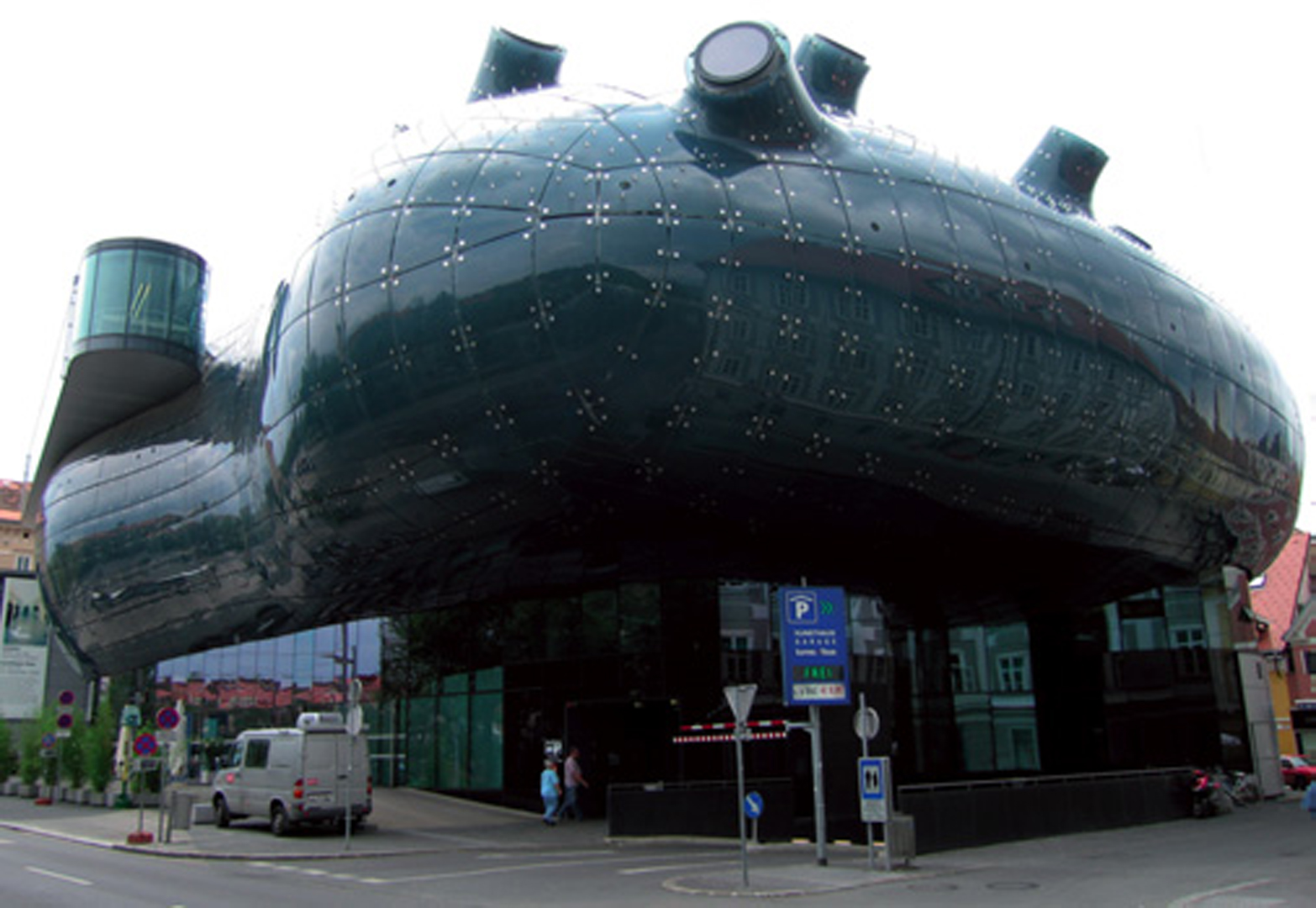“Paneling architectural freeform surfaces” by Eigensatz, Kilian, Schiftner, Mitra, Pottmann, et al. …
Conference:
Type(s):
Title:
- Paneling architectural freeform surfaces
Presenter(s)/Author(s):
Abstract:
The emergence of large-scale freeform shapes in architecture poses big challenges to the fabrication of such structures. A key problem is the approximation of the design surface by a union of patches, so-called panels, that can be manufactured with a selected technology at reasonable cost, while meeting the design intent and achieving the desired aesthetic quality of panel layout and surface smoothness. The production of curved panels is mostly based on molds. Since the cost of mold fabrication often dominates the panel cost, there is strong incentive to use the same mold for multiple panels. We cast the major practical requirements for architectural surface paneling, including mold reuse, into a global optimization framework that interleaves discrete and continuous optimization steps to minimize production cost while meeting user-specified quality constraints. The search space for optimization is mainly generated through controlled deviation from the design surface and tolerances on positional and normal continuity between neighboring panels. A novel 6-dimensional metric space allows us to quickly compute approximate inter-panel distances, which dramatically improves the performance of the optimization and enables the handling of complex arrangements with thousands of panels. The practical relevance of our system is demonstrated by paneling solutions for real, cutting-edge architectural freeform design projects.
References:
1. Arya, S., and Mount, D. M. 1993. Approximate nearest neighbor queries in fixed dimensions. In SODA, 271–280. Google ScholarDigital Library
2. Bobenko, A., and Suris, Yu. 2009. Discrete differential geometry: Integrable Structure. Graduate Studies in Math. AMS.Google Scholar
3. Cohen-Steiner, D., Alliez, P., and Desbrun, M. 2004. Variational shape approximation. ACM Trans. Graphics 23, 3, 905–914. Google ScholarDigital Library
4. Feige, U. 1998. A threshold of ln n for approximating set cover. JACM 45, 4, 634–652. Google ScholarDigital Library
5. Fu, C.-W., Lai, C.-F., He, Y., and Cohen-Or, D. 2010. K-set tilable surfaces. ACM Trans. Graphics 29, 3. Google ScholarDigital Library
6. Glymph, J., Shelden, D., Ceccato, C., Mussel, J., and Schober, H. 2002. A parametric strategy for freeform glass structures using quadrilateral planar facets. In Acadia, 303–321.Google Scholar
7. Golovinskiy, A., Podolak, J., and Funkhouser, T. 2009. Symmetry-aware mesh processing. Mathematics of Surfaces. Google ScholarDigital Library
8. Johnson, D. S. 1974. Approximation algorithms for combinatorial problems. Journal of Computer a. System Sciences 9, 256. Google ScholarDigital Library
9. Julius, D., Kraevoy, V., and Sheffer, A. 2005. D-charts: Quasi-developable mesh segmentation. Computer Graphics Forum (Proc. Eurographics) 24, 3, 581–590.Google ScholarCross Ref
10. Li, B., Schnabel, R., Shiyao, J., and Klein, R. 2009. Variational surface approximation and model selection. Computer Graphics Forum (Proc. Pacific Graphics) 28, 7, 1985–1994.Google ScholarCross Ref
11. Liu, Y., Pottmann, H., Wallner, J., Yang, Y.-L., and Wang, W. 2006. Geometric modeling with conical meshes and developable surfaces. ACM Trans. Graphics 25, 3, 681–689. Google ScholarDigital Library
12. Mitra, N. J., Guibas, L. J., and Pauly, M. 2006. Partial and approximate symmetry detection for 3D geometry. ACM Trans. Graphics 25, 3, 560–568. Google ScholarDigital Library
13. Mitra, N. J., Guibas, L. J., and Pauly, M. 2007. Symmetrization. ACM Trans. Graphics 26, 3, 63. Google ScholarDigital Library
14. Pauly, M., Mitra, N. J., Wallner, J., Pottman, H., and Guibas, L. J. 2008. Discovering structural regularity in 3D geometry. ACM Trans. Graphics 27, 3, 43. Google ScholarDigital Library
15. Podolak, J., Shilane, P., Golovinskiy, A., Rusinkiewicz, S., and Funkhouser, T. 2006. A planar-reflective symmetry transform for 3D shapes. ACM Trans. Graphics 25, 3, 549–559. Google ScholarDigital Library
16. Pottmann, H., and Wallner, J. 2001. Computational Line Geometry. Springer-Verlag New York, Inc. Google ScholarDigital Library
17. Pottmann, H., Liu, Y., Wallner, J., Bobenko, A., and Wang, W. 2007. Geometry of multi-layer freeform structures for architecture. ACM Trans. Graphics 26, 3, 65. Google ScholarDigital Library
18. Pottmann, H., Hofer, M., and Kilian, A., Eds. 2008. Advances in Architectural Geometry. Vienna.Google Scholar
19. Pottmann, H., Schiftner, A., Bo, P., Schmiedhofer, H., Wang, W., Baldassini, N., and Wallner, J. 2008. Freeform surfaces from single curved panels. ACM Trans. Graphics 27, 3, 76. Google ScholarDigital Library
20. Shamir, A. 2008. A survey on mesh segmentation techniques. In Computer Graphics Forum, vol. 27, 1539–1556.Google ScholarCross Ref
21. Shelden, D. 2002. Digital surface representation and the constructibility of Gehry’s architecture. PhD thesis, M.I.T.Google Scholar
22. Singh, M., and Schaefer, S. 2010. Triangle surfaces with discrete equivalence classes. ACM Trans. Graphics 29, 3. Google ScholarDigital Library
23. Varady, T., and Martin, R. 2002. Reverse engineering. In Handbook of CAGD, 651–681.Google Scholar
24. Whiting, E., Ochsendorf, J., and Durand, F. 2009. Procedural modeling of structurally-sound masonry buildings. ACM Trans. Graphics 28, 5, 112. Google ScholarDigital Library
25. Wu, J., and Kobbelt, L. 2005. Structure recovery via hybrid variational surface approximation. Computer Graphics Forum (Proc. Eurographics) 24, 3, 277–284.Google ScholarCross Ref
26. Yan, D.-M., Liu, Y., and Wang, W. 2006. Quadric surface extraction by variational shape approximation. In GMP, 73–86. Google ScholarDigital Library




